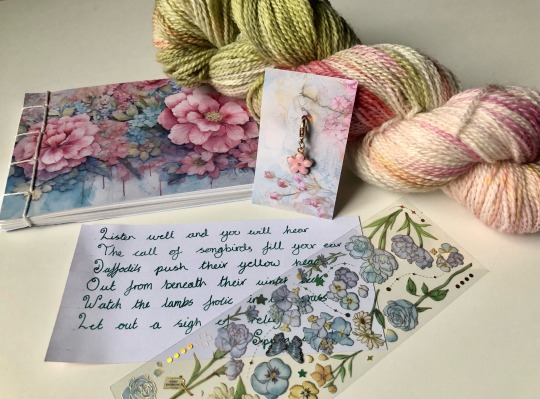Note
How many versions of Cinderella in the world involve the maiden getting her revenge on the family that abused her?
Quite a few do.
In the Vietnamese Story of Tam and Cam, Tam tricks her stepsister Cam into boiling herself to death in the end, telling her the boiling water will make her beautiful, and then salts her flesh and feeds it to the unsuspecting stepmother. Lest you think Tam is too sadistic, this punishment isn't just for being treated like a servant – Cam and her mother had murdered her after her marriage, and Cam destroyed all the various forms in which her spirit came back until she finally regained her human form.
In some Finnish versions, which have an ogress who abuses the heroine while magically disguised as her mother, she takes some "accidentally-on-purpose" revenge during the feast at the palace. She throws bones from the meat at either the ogress herself or at her repulsive daughter, breaking her foot on the first night, her hand on the second night, and putting out her eye on the third night.
In the Scottish tale of The Red Calf, early on in the story, the stepmother finds out that the titular magical calf has been supplying the girl with food. So she commands her to kill the calf while her stepsister holds it down. But instead the girl brings down the axe on her stepsister's head, killing her, then takes the calf and runs away.
In the Portuguese tale of The Hearth Cat, the title character is rewarded by fairies for cleaning their house. But when her stepsister wants the same reward, the heroine tricks her into making a mess in the fairies' house instead of cleaning it, and as a result they curse the stepsister and make her hideously ugly.
In the Italian Cat Cinderella, at the beginning of the story, the heroine Zezolla tricks her stepmother into putting her head inside a chest, then slams down the lid and breaks her neck. This doesn't end well for her, though – she does it at the urging of her governess Carmosina, who proceeds to marry her father and become an even more wicked stepmother than the first one was.
And this doesn't even count the versions where her abusers are killed by the prince, sometimes in brutal ways, or where they're attacked by her magical helpers (e.g. the pigeons in the Grimms' version).
Then there are the adaptations of the familiar Cinderella story that don't make her as forgiving as Perrault did. The lesser-known 1955 German film by Fritz Genschow has Cinderella condemn her stepfamily to work as scullery maids for a year. And in Ever After: A Cinderella Story, Danielle combines mercy with tit-for-tat revenge in an elegant, diplomatic way, by saving Baroness Rodmilla and Marguerite from being deported to America, only to have them permanently reduced to laundresses instead.
These are only the versions I've read or seen so far. I'm sure there are several more. Perrault may have popularized the idea of Cinderella forgiving her stepfamily in the end, but in no way is that a universal aspect of the tale!
13 notes
·
View notes
Text
The next set of stories I've read in Cinderella Tales From Around the World are from East Asia. They start in China with the tale of Ye Xian (sometimes also romanized as "Yeh-Hsien" or "Yeh-Shen"), the oldest known Cinderella variant apart from the Egyptian Rhodopis. Then comes a second, lesser-known Chinese variant, and others from Korea, Japan, and Vietnam.
*In all these East Asian variants, the heroine has just one stepsister, or half-sister, or foster sister. In fact apart from Ye Xian, the stories tend to be named after the two sisters, not just the heroine: Beauty and Pock Face (China), Pigling and Her Proud Sister (Korea) Kongji and Patji (Korea), Benizara and Kakezara (Japan), Tam and Cam (Vietnam), or Kajong and Haloek (Vietnam)
*Also in all these stories, the heroine's real mother is dead, and her abuser is either her stepmother or her foster mother. But as in the European versions, it varies whether the heroine's father is alive or dead, and in Ye Xian, which is the oldest of these stories or at least the first to be written down, her father is dead. (You might think the variants with a living father would be older, and that his death was a later attempt to soften the story for children rather than portray a negligent parent, but such isn't the case.) It also varies whether her father married the stepmother after his first wife died or whether he married two wives at once, as in Ye Xian.
*The Korean Pigling and Her Proud Sister is the only variant in this group where the heroine's stepfamily gives her a rude nickname. (Her real name is Pear Blossom.) All the others have her go by her real name or by a flattering nickname, while the stepsister has an unflattering name or nickname to reflect her ugliness and wickedness: e.g. Beauty and Pock Face, or Benizara ("crimson dish") and Kakezara ("broken dish").
*The two Chinese versions (Ye Xian and the lesser-known Beauty and Pock Face) and the two Vietnamese versions (which are near-identical to each other) both follow the same basic formula. The heroine cares for a fish, or some other animal – in three of these four versions it's a fish, while in Beauty and Pock Face it's her mother reincarnated as a cow – until her stepmother kills it and cooks it. But she saves the bones, which from then on grant her wishes.
**In some versions she goes to a festival, in others to a procession or to the theatre, but in some she doesn't go anywhere, but just wears her finery when she's alone, as in Perrault's Donkeyskin.
*In the two Korean variants, Pigling and Kongji and Patji (the latter isn't included in this book, but I've read it elsewhere), much of the story revolves around the stepmother setting various impossible chores for the heroine to complete before she can go on a picnic, or to a dance, or to the city see a royal procession. But various different animals come and complete the tasks for her. Pigling doesn't receive magical finery, but just puts on her own elegant clothes when her chores are done, while Kongji is given finery by a "celestial maiden."
In the Japanese Benizara and Kakezara, the stepmother sends the two girls out to gather chestnuts, ordering them not to come home until their bags are full, but secretly puts a hole in Benizara's bag so it will never fill up. Benizara tries to fill the bag until after dark, then gets lost. But she finds the house of an old woman, who gives her directions home, a full bag of chestnuts, and a magic box that will grant her every wish from then on.
*In some of these tales, most notably Ye Xian, the heroine's eventual husband is a king. But so far, East Asia seems to have the highest percentage of Cinderellas who don't marry royalty. Most of their husbands are just lords or gentlemen.
*The heroine never meets her future husband before she loses her shoe: instead, what usually happens is that either a bird picks it up and carries it to him (as in the Egyptian Rhodopis), or else another person finds it and sells it, and it changes hands again and again until it finally reaches the king.
**There's no lost shoe in Pigling or in Benizara and Kakezara. In the Korean tale, Pigling just meets a wealthy young man while visiting the city and tells him where she lives, and he arranges their marriage, no fuss, no muss. In the Japanese tale, the lord Benizara ultimately marries just sees her at the theatre, notices her give some candy to Kakezara (an equivalent to Perrault's Cinderella sharing her citrus fruits with her stepsisters), and concludes that they must be sisters, so the next day he goes straight to the stepmother's house. Kongji and Patji, the other Korean Cinderella that isn't included in this book, does include a lost shoe, though.
**Beauty and Pock Face has an odd variation on the shoe loss. Beauty loses her shoe in a ditch while riding her magically-given horse, and doesn't want to leave it lying there, but can't climb down to get it in her finery. A fishmonger, a rice broker, and oil merchant each pass by in turn, and she asks each one to pick up the shoe for her, but each insists that she marry him in exchange. She refuses because they're respectively too smelly, too dusty, and too greasy. Finally a handsome young scholar arrives, he also agrees to give her the shoe if she'll marry him, and this time she says yes.
*Ye Xian has a strangely bittersweet ending that casts both the stepfamily and Ye Xian's royal husband in a more complex light. After Ye Xian leaves, the stepmother and stepsister are killed by "flying rocks" (since they're cave-dwellers, I assume this is a cave-in), and their tomb comes to be called The Tomb of the Regretful Women. Their spirits atone for their cruelty in life by assuring marriage to anyone who prays to find a spouse at their tomb. Meanwhile, Ye Xian's husband the king becomes greedy and uses her magic fishbones to make constant wishes for wealth, until after a year, they lose their power. So the king buries them on the beach, where the tide eventually washes them away.
**Beauty and the Pock Face and the two near-identical Vietnamese versions all continue the story after the heroine's marriage with a "murder and replace" plot line. The stepmother and stepsister kill the heroine, making it look like an accident, and her grieving husband marries the stepsister yet never loves her. But the heroine's spirit comes back in various bird and plant forms, each of which are destroyed by the stepsister, until finally she returns to her human form in the house of an old woman, who becomes her foster mother until eventually her husband finds her. The stepsister is boiled to death: in Beauty and Pock Face, both sisters have to jump into hot oil to determine which is the "true wife," and Beauty is unharmed but Pock Face dies, while in the Vietnamese versions, the heroine tricks her stepsister into boiling herself, claiming it will make her beautiful. Then her flesh is salted like fish and sent as a "gift" to her mother, who either eats it or is about to do so when she realizes what it is, and either drops dead or is left in horror and grief.
Next come the variants from Southeast Asia.
@ariel-seagull-wings, @adarkrainbow, @themousefromfantasyland
17 notes
·
View notes
Text
Something that's been knocking around in my head for a while: I think a lot of new writers get thrown off by their assumption that writing will be anything like reading. Reading is a dreamy, passive experience--scenes, dialogue, and description flow over you as you are taken under the writer's spell. Writing, on the other hand (with the exception, sometimes, of the first draft), is the laborious, almost mechanical-like task of putting narrative elements together so that the reader can lose themselves in your story. In short, reading and writing are very different experiences, and the assumption that they will be, or even should be, the same, is cause for much angst among new and experienced writers alike. It's a frustrating thing, because a love of reading is usually what gets people interested in writing in the first place. I've been writing for several decades and I still feel confounded by this clash--it's part of why I don't read much when I'm deep into my writing, and vice versa. And when I am writing, I constantly have to remind myself: Writing is not watching a magic show. Writing is figuring out how to smuggle the rabbit into the hat.
13K notes
·
View notes
Text
#interesting reading#wish it had been less general about time and place when considering the phenomenon#but still interesting!
21 notes
·
View notes
Text
“After a performance, I came out into the lobby where a middle-aged Dutch woman was waiting to see me. She politely inquired, “What is Hans doing now?” I responded, “Who do you mean by Hans?” “Hans Buruma, my husband,” she said. As she explained it, Hans Buruma was once in charge of mail delivery at the Amsterdam Central Post Office. Three years before, he had attended Heretics (Jashumon), a guest production from Tokyo presented by my theatre troupe at the Mickery Theater. Just after the play began, two men masked in black leaped down into the audience area, grabbed her husband by the arms, and forcibly dragged him up onto the stage. Once onstage, Hans was dressed in a costume and made up, and before he knew it, he had become a character in the play. At least two times during the course of the play, she clearly saw her husband joining other characters who together pulled the ropes. He seemed to be enjoying himself. But when the play was over, Hans never returned to his seat in the audience. The wife waited for two hours, then went to the dressing room, but the members of the company had already returned to the hotel. That night, Hans failed to come home. After two more nights, he still hadn’t returned. By then, the company had left Holland and moved on to West Germany. She thought he had joined the company, that “they hired Hans for his acting skill.” She thought, “My husband is in the play.” Now. after three years had passed, she was pleading with me, “Please give me back my husband.” I had to tell her that I had never heard this story before. Neither I nor anyone in the company knew a middle-aged Dutchman named Hans Buruma. There was no evidence indicating that such a person had been with us during the past three years. When I told her that I didn’t know him, she was on the verge of tears. “Then where is Hans?” she asked. Three years ago–one middle-aged male post-office delivery worker evaporated into our play. In this case, we cannot distinguish where the drama ends and reality begins.”
— Shuji Terayama, The Labyrinth and the Dead Sea: My Theatre, translated by Carol Sorgenfried in Unspeakable Acts: The Avant-Garde Theatre of Terayama Shuji
7K notes
·
View notes
Text
I've now reached the last of the main list of Cinderella stories from Cinderella Tales Around the World. The book is nowhere near over, though: after this it goes into the various "subtypes" of Cinderella, such as Donkeyskin.
The last few "official" Cinderella stories in this book are from Mexico and Chile. I was disappointed not to see more South American versions, and particularly that there were none from Brazil for @ariel-seagull-wings. But the Donkeyskin tales later in the book do include a Brazilian version, which I look forward to sharing!
Meanwhile...
*As in the versions from the Philippines, the heroine is named Maria in all three of these Latin American tale.
*The Mexican version is called Maria Cenzia, or "Cinder-Mary." The title character is a homeless orphan who lives in an ash-hole belonging to a household of black Moorish witches. They eventually discover her, take her in as a servant, and send her to the river with a black sheepskin, ordering her to wash it until it's white. But a lady appears and magically does the task for her, then gives her a magic wand to grant her wishes and puts a shining star on her forehead. When the jealous daughter of one of the witches sees this, she takes a black sheepskin to the river too, but the lady puts an ugly growth on her forehead instead of a star. Maria later uses her magic wand to give herself finery to wear to church and to give herself wings to fly home before the witches can catch her. She loses a shoe, of course, which leads to her marriage to the prince. But then the witches turn her into a dove with a magic pin. Yet one day, her father-in-law the king finds her and takes out the pin, breaking the spell, and when all is revealed, the witches are burned at the stake.
*The two Chilean versions, Maria the Cinder-Maiden and Maria the Ash-Girl, are nearly identical to each other and very similar to Maria Cenzia too. Maria persuades her father to marry a seemingly-kind widow with a daughter of her own, but is abused afterwards. She has a pet cow, which the stepmother spitefully has killed, but inside its body Maria finds a magic wand. She then has to wash the cow's organs in a stream, but they fall in and are swept away. An old woman comes along and offers to get them for her, and in return Maria cleans her house and cooks supper for her; for this, the old woman gives Maria a shining star on her forehead. The next day the envious stepsister has her own pet cow killed, takes the organs to the stream, and loses them on purpose, but she shows the old woman no kindness, and so she receives a turkey wattle on her forehead instead of a star. Some time later, there's a ball at the royal palace. Maria uses her wand to give herself finery and a coach, and of course she loses a shoe, and the prince uses it to search for her. The stepsister binds her own foot with tight bandages to make the slipper fit, but either a dog or a parrot alerts the prince, and Maria is found.
*It's interesting that the motif of the heroine receiving a shining mark on her forehead (a star, a moon, or a jewel) is found in Cinderella tales from both Latin America and Iran, yet rarely seen elsewhere. My guess is that the motif originated in the Middle East, was brought to Spain by the Arabs, and then traveled from Spain to Latin America.
*This is probably as good a time as any to discuss another recurring theme I've noticed. While around the world it varies whether the heroine's abusers are punished, forgiven, or neither, it seems that when they are punished, the worst punishment usually falls on the (step)sister(s), not the (step)mother. Just look at the Grimms' version: the stepmother is Aschenputtel's main antagonist, and she abuses her own daughters too by forcing them to cut off parts of their feet, yet in the end she goes unpunished, while her daughters' eyes are pecked out by birds. Yet even in versions where the (step)mother does get a punishment, the more brutal killing, maiming, or permanent disfigurement tends to be reserved for her daughter(s). Some versions try to justify it by portraying the sisters as abusing Cinderella more than their mother does, but most don't bother. In many versions, the simple "crime" of being Cinderella's rival is treated as if it were worse than being her chief abuser.
@ariel-seagull-wings, @adarkrainbow, @themousefromfantasyland
56 notes
·
View notes
Text
actually there were 0 time travellers on the Titanic, because the time cops have an entire outpost to safeguard that one particular point in history. every rookie spends a least a month on Titanic duty and they all complain bitterly about it since it is, essentially, the time travel equivalent of being the guard who has to stop tourists from licking the Liberty Bell.
#actually there was time travel on the titanic but changing it would violate the prime directive#because it was a result of local technological experimentation#('twas tesla and his earthquake machine if you were curious)#sent the ship ten minutes in the future and hastened its demise#(Distant Waves is a fun book btw)#(no star trek in it though that's my edition)
123K notes
·
View notes
Text
the x files is funny because at the time it was “progressive” or whatever to have the ultra-rational, levelheaded character be a woman
but it’s also a show where all the fucked up alien shit actually is real, so she’s just constantly wrong about everything
90K notes
·
View notes
Text


This comic was inspired by a post that I cannot find [redacted rant about how much tumblr's search function is the closest there is tho pure evil]. So you know, if anyone has that post hand it I will actually make you a silly litltle doodle.
10K notes
·
View notes
Text
Happy Spring! Blessed Ostara!
You know what this means? It’s time for the grand reveal!! Hopefully by this time, all of you who ordered a spring equinox mystery box have received it. You might have opened it all already but maybe you saved it for today! This is me officially giving you permission to open it up! In fact if you haven’t opened it yet, go do that now before you continue with this post.
For the rest of you, here it is!

And also the options

I’m super happy with how this all turned out and it was so much fun to put together! I would love to do this again in the future with various themes so let me know if that is something you’re interested in!
And I know what you’re all thinking. Florals? In spring? Groundbreaking. But Meryl Streep failed to take into account one thing: I love florals.
And as always, if you got a box (or anything from my shop) please please please share what you make with it and tag me!
72 notes
·
View notes
Text
Adulthood is really just trying to accomplish things while circling burnout exhaustion for your entire life, huh?
#if i ignore the stress long enough maybe it will go away#she said as she dove headfirst into new craft projects to cope with bureaucracy
218 notes
·
View notes
Link
This scam made the California University study 124 imported oils and found that over 70% of samples failed the tests.
These failed:
Mezzetta
Carapelli
Pompeian
Primadonna
Mazola
Sasso
Colavita
Star
Antica Badia
Whole Foods
Safeway
Felippo Berio
Coricelli
Bertolli
These brands passed:
Corto olive
Lucero
McEvoy Ranch Organic
Omaggio
California Olive Branch
Bariani Olive oil
Lucini
Ottavio
Olea Estates
Cobram Estate
Kirkland Organic
Also, test the olive oil yourself at home. Put the bottle out when cold, or in the fridge for 30 min. if it gets solid, it is pure and has monounsaturated fats.
85K notes
·
View notes
Text
don't you love it when you need an appointment before you can ask for help but in order to get an appointment you already need to be able to fill out the online form that you need help with.
and you need the vehicle inspected to be registered but it needs to be registered to be inspected
and it needs to be insured to be registered but needs to be registered to be insured
also the roads are terrible and the fees are high. what are you doing with these taxes, state government?
#the roads are terrible because it's localities that maintain them rather than the state#but even the state roads are bad#sigh.#i hate it when people make up rules too. because half of the circuits i mentioned above aren't actual legal ones#but everyone has a policy of how they like to do things. except their optional policy makes it impossible for me to do what i need#i don't care if you prefer if i did that first i literally cannot until you do the thing for me#you're not the state government so deal with it and do your job
1 note
·
View note
Text

Stop equipping every character with therapy speak and instead consider placing them somewhere on this chart
20K notes
·
View notes
Text
We also have words for adult tasks like "working" and "parenting" but there's not a neat word that means "doing chores and taking care of bureaucratic things like taxes and paying bills"
The real reason millenials say "Adulting" is that that if you say something is "for adult reasons" or "grown up reasons" we've been trained to associate that with sex and shit when we just wanna say, be vague about our chore habits
75K notes
·
View notes

